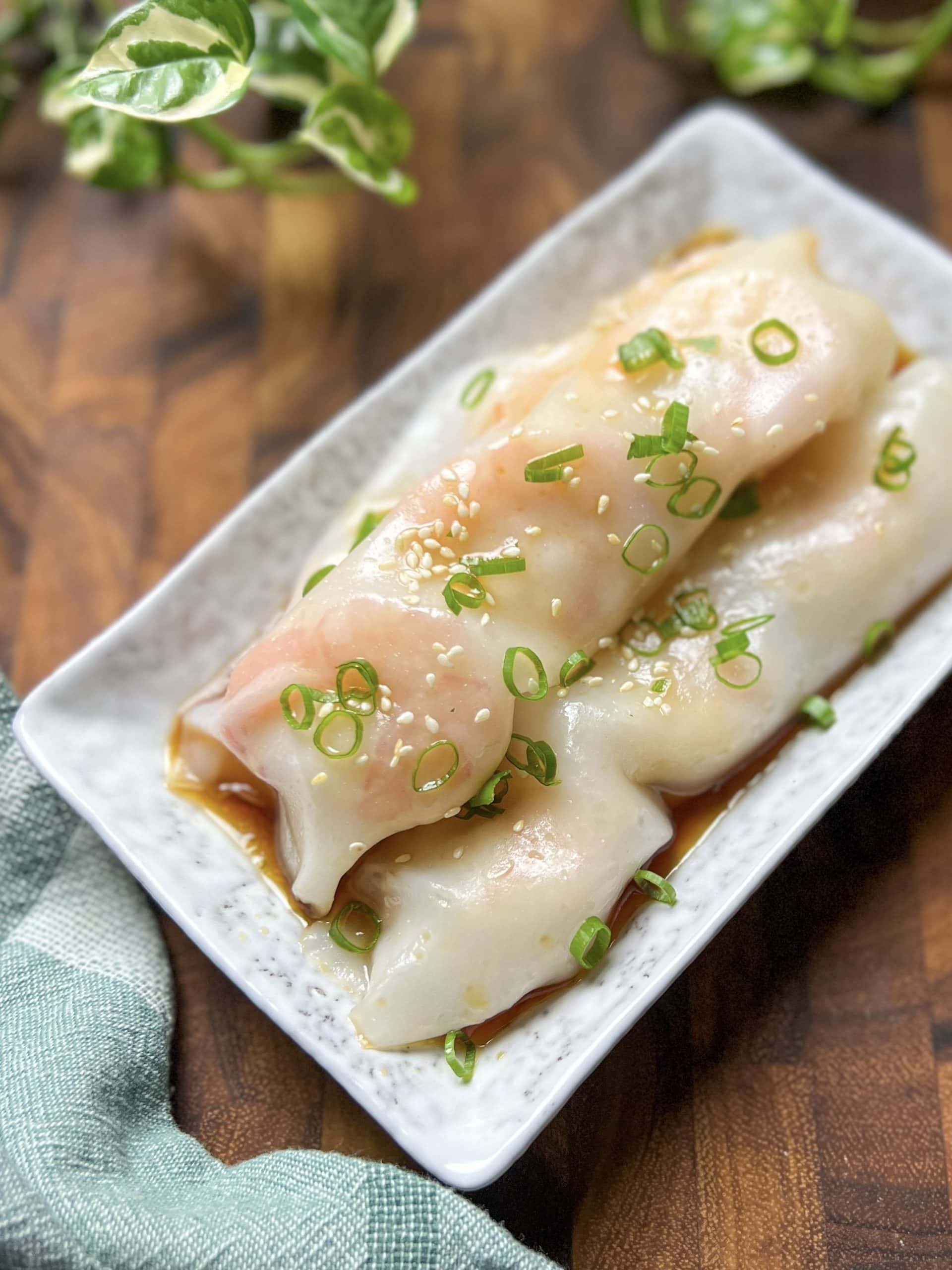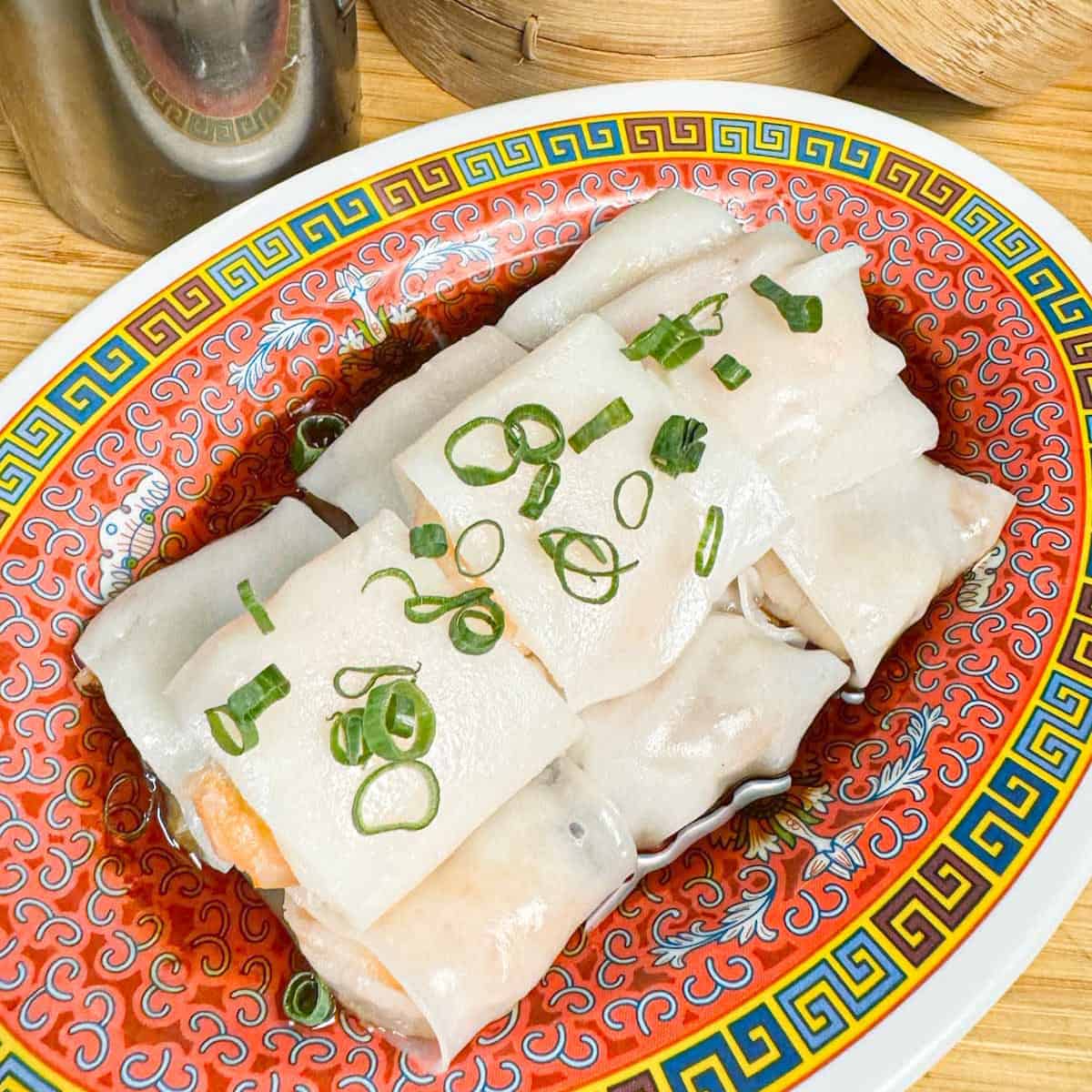So, I decided to tackle dim sum shrimp rolls the other day. Been craving them, and you know, store-bought is just not the same. It’s a bit of a process, not gonna lie, but totally worth it.

Prepping the Star – The Shrimp
First things first, the shrimp. I got about a pound of fresh ones. Had to peel and devein every single one. Yeah, that’s the part everyone loves, right? Definitely tedious. I find using a small paring knife helps speed it up a bit. Once they were all clean, I patted them super dry with paper towels. This is key, don’t want watery filling.
Then, I chopped them up. I didn’t want a complete paste, I like a bit of chunky texture in my shrimp rolls. So, some I minced finely, and some I just roughly chopped. Gives it a nice bite, I think. After chopping, I gave them a good sprinkle of salt and a bit of baking soda – a trick I learned to make them a bit more springy. Let that sit for a bit while I prepped other stuff.
Building the Flavor – The Filling Mix
For the rest of the filling, I kept it pretty classic.
- Water chestnuts, finely diced. You need that crunch, it’s essential.
- A little bit of finely minced ginger. Not too much, just enough for that warmth.
- Some chopped green onions, for freshness.
- And then the seasonings: a splash of light soy sauce, a good drizzle of sesame oil, a dash of white pepper (always white pepper for this stuff), a tiny bit of sugar to balance it out, and some cornstarch to bind everything together.
I rinsed the shrimp quickly to get rid of the excess salt and soda, patted them dry again, really dry. Then, into a bowl they went with all the other goodies. I mixed it all up. Some people say you should slap the mixture against the bowl for a while to get it bouncy. I gave it a good, vigorous stir for a few minutes. Seemed to do the trick.
The Tricky Part – Working with Bean Curd Sheets
Okay, now for the wrappers. I used dried bean curd sheets, or ‘fu pei’. These things can be a bit delicate. You have to rehydrate them. I took a damp kitchen towel, a clean one, mind you, and gently wiped down each sheet. You don’t want them soaking wet, just pliable enough to roll without cracking. Some people lightly spray them with water. I found the damp towel method gives me more control. Patience is your friend here. Seriously, go slow, or they’ll tear, and then it’s just frustrating.

Rolling ‘Em Up!
Once the sheets were ready, I cut them into manageable squares, maybe about 6 inches by 6 inches. Then I spooned a line of the shrimp filling near one edge. Not too much, or they’ll burst when you fry them. Learned that the hard way before. Folded in the sides, then rolled ’em up fairly tightly, like little spring rolls. To seal the edge, I just used a tiny dab of the shrimp mixture itself. It’s sticky enough.
The first couple always look a bit wonky, you know? But after the third or fourth, I got into a rhythm. It’s quite satisfying once you get the hang of it.
Frying to Golden Perfection
Deep frying time! I filled my wok with enough oil. Got it to about 350°F (175°C). You don’t want it too hot, or the outside will burn before the shrimp inside is cooked. Gently placed the shrimp rolls into the hot oil, making sure not to overcrowd the wok. Fried them in batches.
They need a few minutes on each side, just until they’re beautifully golden brown and super crispy. The smell in the kitchen at this point? Absolutely amazing. I used chopsticks to turn them. Once they were done, I fished them out and let them drain on a wire rack. Important to drain them well, nobody likes a greasy shrimp roll.
The Delicious Payoff
And that was pretty much it! Served them up nice and hot. They were crispy on the outside, and the shrimp filling was so juicy and flavorful with those bits of crunch from the water chestnuts. We had them with some Worcestershire sauce, which is my go-to for these. A bit of sweet chili sauce works great too.

Yeah, it took some effort, a bit of time, but making dim sum shrimp rolls from scratch? So much better than anything else. Definitely doing this again soon. Maybe I’ll try adding some bamboo shoots next time. Always experimenting, right?
